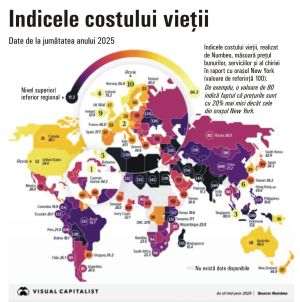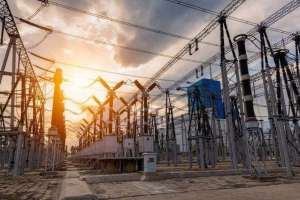
In 2024, two reports were published, prepared at the request of the European Commission. The first report, coordinated by Enrico Letta, is entitled "More than a Market" and refers to the transformation of the single market into a true European market (April). The second report, coordinated by Mario Draghi, is entitled "The Future of European Competitiveness" (September).
Both reports start from the observation that, since 2000, the growth of the economy and the standard of living in the European Union has lagged behind that of the USA, namely GDP/capita increased by 30% in the EU and by 60% in the USA. There are two main causes of this evolution: the European economy has remained stuck in traditional industries, with limited possibilities to innovate and develop new technological breakthroughs, with high potential to increase productivity. The US, but also China, have increased productivity faster, especially on the basis of new digital technologies; the fragmentation of the single market, especially in the energy, financial markets and electronic communications sectors; and the excessive regulation and insufficient coordination of European policies, which inhibit the potential for innovation and slow down investment and economic growth.
At the same time, new global challenges have emerged for the EU: the trend towards fragmentation of the global economy and the weakening of the international order based on multilateral rules; the loss of access to cheap energy suppliers; the entry into an era of geopolitical conflicts, with the loss of the peace dividend, through increased spending on security and defence and the increasing risk that economic dependencies on countries outside the EU, for raw materials and products of strategic importance, will become vulnerabilities.
The two reports contain recommendations for profound changes in EU policies, so that the EU can face these new challenges. And these changes must be started as soon as possible, if the EU wants to recover the productivity and competitiveness deficit and remain an independent and relevant player on the world stage.
In a suggestive way, Martin Wolf, the chief economist of the Financial Times, titled his article as follows: "Draghi tries to save Europe from itself" (17.09.2024).
Given that the problems reported in the two reports directly concern Romania, as well as the economic, social imbalances and risks that our country has accumulated, we can also ask ourselves the question "Who is saving Romania from itself?". We should probably find out the answer after the elections of December 1, 2024. I say probably, because the electoral debates in Romania were missing exactly the topics and recommendations from the two reports.
It is remarkable that, during the period 2000-2023, Romania managed to reduce the development gap compared to the EU average, namely increased GDP per capita, at purchasing power parity, from 26% of the EU average, to 80%. But now, we find that we have reduced the gap compared to the EU economy, which has lost momentum in the competition with the USA and China.
The Draghi report shows that the EU economy has remained stuck in a static industrial structure, with companies specializing in mature technologies, characteristic of the last century, with lower investments in research and innovation. This finding is fully valid for Romania. Moreover, now we are trying to recover such industries with mature technologies, which we lost in the transition years - the metallurgical industry, the chemical industry, the food industry. It is not by chance that the electoral platforms of the main political parties emphasize the need for "reindustrialization". From the two reports, however, we learn that it is not a question of recreating industries with old technologies, with massive imports of raw materials and energy-intensive. Rather, we need an industrial "renewal", based on the three major trends of the 21st century: digitalization, decarbonization and the circular economy.
At the beginning of the 21st century, the additional problem that Romania has is that it needs massive investments to create the basic infrastructure necessary for a modern economy, in transport, energy, education and culture, health, agriculture and the environment, defense, including at the level of local communities. Developed countries have created this infrastructure since the last century, and are currently adapting it to the requirements of using digital technologies and decarbonization. Therefore, the recommendation in the Draghi report to increase investment at EU level becomes more urgent for Romania, which, in addition to investments for industrial renewal, in order to increase productivity and create new jobs, also needs substantial funds for infrastructure modernization.
The EU is facing an "existential challenge" and, consequently, radical changes needed to close the innovation gap, especially in advanced technologies, increase competitiveness, strengthen security and reduce dependencies in strategic industries. Romania, for its part, is at an essential stage in its development, when we can make a leap in the modernization of infrastructure and industries, relying not only on our own financial resources, but also on the significant European funds received from the EU budget (2021-2027), from the PNRR, as well as on the still existing capacity to commit external loans at reasonable financing costs.
Both reports draw attention to the fragmentation of the single market, especially in the fields of energy, finance and electronic communications, which reduces the EU's investment and economic growth potential.
The lack of a single energy market, together with the high dependence on imports - for crude oil (over 90% of the needs) and natural gas (over 80%) - contributes to the loss of competitiveness of European companies, which are forced to pay higher prices, 2-3 times for electricity and 4-5 times for natural gas, compared to companies in the USA. The EU does not even use its collective bargaining power to contract, for example, the needs of liquefied natural gas for all member states.
In Romania, where we have a much lower dependence on imports of crude oil and natural gas, compared to the EU average, we still manage to have, in certain periods of time, the highest prices for electricity in the EU. The causes are multiple: the way the country's market is organized, operated and balanced; during peak consumption periods, we import electricity at high prices; we experience excessive delays in the construction of new capacities. We should have a school textbook about the Iernut power plant, whose reconstruction - for the transition to natural gas - began in 2016, and in 2024, the deadline for putting it into operation is again being requested to be postponed to the end of the first semester of 2025.
The main electoral platforms refer to the future exploitation of natural gas from the Black Sea and the requirement that it be used for the production of high-value-added products in the country. In the minds of some politicians, but not only, Romania would have a competitive advantage through its price, which should be much lower than the import price. It is important to emphasize that, from the point of view of the real competitiveness that we want, the price of natural gas from the Black Sea should be correlated with that on foreign markets. The advantage may come from lower transportation costs, as natural gas no longer needs to be pumped long distances through pipelines, as is the case with imported gas, or transported by ship in a liquefied state.
Both reports highlight the serious obstacle posed by the lack of financial integration in the EU, and in particular the lack of a Capital Markets Union, in financing the expansion of European companies globally, as well as in transforming start-ups, which are full of new business ideas, including in the area of digital technologies, into commercial successes. The reports also highlight a fundamental aspect of European integration in general and financial market integration in particular, namely the lack of a common European asset with predictability and certainty (such as bonds issued by the EU).
In these conditions, although EU households have savings of 1,390 billion euros (in 2022), compared to 840 billion euros in the US, the wealth of EU households is still considerably lower than that of those in the US (Draghi report). The reason is the lower returns on their assets invested in EU financial markets. Consequently, a large part of EU savings is invested in financial markets outside the EU, with better returns, and EU companies, with high growth potential, want to list on US stock exchanges. In Romania, although we have a financial sector with the specific elements of a market economy, it is still underdeveloped, compared to the financial sectors of developed EU member states. The banking system, the main component of the country's financial sector, has a reduced participation in the financing of companies. The degree of financial intermediation (bank loans to the private sector, excluding non-bank financial institutions) was only 24% of GDP in 2023, compared to 82% in the euro area. Small and medium-sized firms are financed more by loans granted by owners and supplier (trade) credits. The long-term capital market is also underdeveloped, due to a low presence of pension funds, based on the accumulation of funds during working life.
Assets managed by the Romanian financial sector represent only 90% of GDP, compared to 715% in the euro area (2022). The Romanian political class does not yet have the will to overcome the resistance of privileged social groups to transform special pensions into occupational pensions, with the accumulation of funds from employee and employer contributions. Such a reform would contribute substantially to the development of the Romanian capital market.
Following the same trend in the EU, the first unicorn company in Romania, UiPath, was listed on the New York Stock Exchange; the second Romanian company with the potential to become a unicorn, Bitdefender, also intends to list on the New York Stock Exchange.
Of course, another substantial disadvantage of the EU economy is the limitation of the euro area to 20 of the 27 EU member states, compared to the US, where the dollar is the single currency of all the states that make up the US.
In Romania, we are witnessing a paradox. If we look at the electoral platforms of the main political parties, we notice that the promises regarding the increase of salaries and pensions in the period 2025-2028 are expressed in euros, although the official currency of Romania is the leu. Moreover, the main commercial transactions - sales of houses, land, companies, etc. - are first expressed in euros, even if they are paid in lei. Therefore, we think in euros, we calculate in euros, we make electoral promises in euros, but in the electoral platforms you will not find anything about when and how we intend to respect the commitment we made when Romania joined the EU, to take the necessary measures to adopt the euro.
The Draghi report shows that in order to catch up with the productivity and competitiveness gaps accumulated with the US and, soon, with China, the EU must increase annual investments by about 5 percentage points of GDP, namely an additional annual volume of about 750-800 billion euros (from 22% to 27% of GDP). Financing will be provided by private sector resources, public budgets of the Member States, the EU budget and through loans committed by the EU (common debt) for common projects and the financing of European public goods (interconnection networks, research in advanced technologies and materials, etc.). To increase public investment, governments should take full advantage of the new EU fiscal rules, which offer the possibility of reducing fiscal deficits over a period of 4 or 7 years. Both reports draw attention to the fact that the EU needs to reform the European governance system, including the EU budget, the programmes and allocation of European funds, as well as the way in which European decision-making is very slow, in relation to the changes that are required.
The reports contain important recommendations on the industrial strategies and policies that the EU will have to support, emphasizing that, for their success, there is a need for coordination of trade and fiscal policies to support production in the EU, policies on access to finance, competition and state aid, foreign policies to secure supply chains, etc. Draghi's warning is clear: if the EU does not make the radical changes necessary to become more productive, it will have to choose; it will not be able to be simultaneously a leader in new technologies, a leader in the transition to a green economy and an independent player on the world stage. Moreover, it will not be able to maintain the financing of the social model in the EU.
In this context, Romania has committed to carrying out a complex of structural reforms and a high volume of investments through the PNRR, through the multiannual financial program 2021-2027 and through the budget deficit reduction program 2025-2031. The achievement of these commitments will depend on Romania's credibility, the granting and absorption of European funds, with the aim of increasing the competitiveness of the Romanian economy, recovering economic growth and increasing the standard of living of Romanian citizens in the coming years.













































